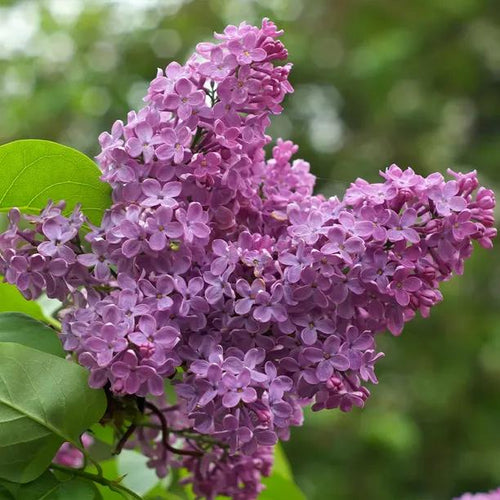Common Lilac Hedge Plants
The Common Lilac tree, Syringa vulgaris, makes a lovely flowering hedging plant or large specimen shrub / small tree, suitable for a small garden.
Lilac can reach 6-7 metres if it grows freely as a tree.
Lilac hedge plants are only delivered bareroot, during winter (Nov-March).
All our hedge plants are measured by their height in centimetres above the ground (the roots aren't measured).
See our selection of hedge shrub plants or view our full range of hedging.
Spacing a Lilac hedge:
Plant Lilac hedging at 2 plants per metre, 50cm apart.
General description of Lilac plants:
Syringa vulgaris, is a large, deciduous shrub or small tree. It's famous for its large, conical clusters of heavily scented flowers in variable shades of pink, which last through May. The large, vibrant green leaves look lovely all summer and turn in a subdued muddle of dusty yellows and peachy oranges in autumn.
Lilac is usually grown as a specimen tree, but it makes a great, dense informal hedge and flowers hard when it's clipped regularly. Being trimmed will also encourage the plant to sucker from the base, so that the stems on a mature Lilac hedge grow so thickly that you can't see through them in winter. It's a great plant for drawing butterflies into your garden.
History & Trivia
Lilac is native to Eastern Europe and the Ottomans grew it extensively. It has been escaping from gardens into the wild here since the 1500's, so it's widely naturalised.

 Secure, One-Tap Checkout
Secure, One-Tap Checkout
 Hand Picked, Delivered to Your Door!
Hand Picked, Delivered to Your Door! 1 Year Bareroot Guarantee
1 Year Bareroot Guarantee


